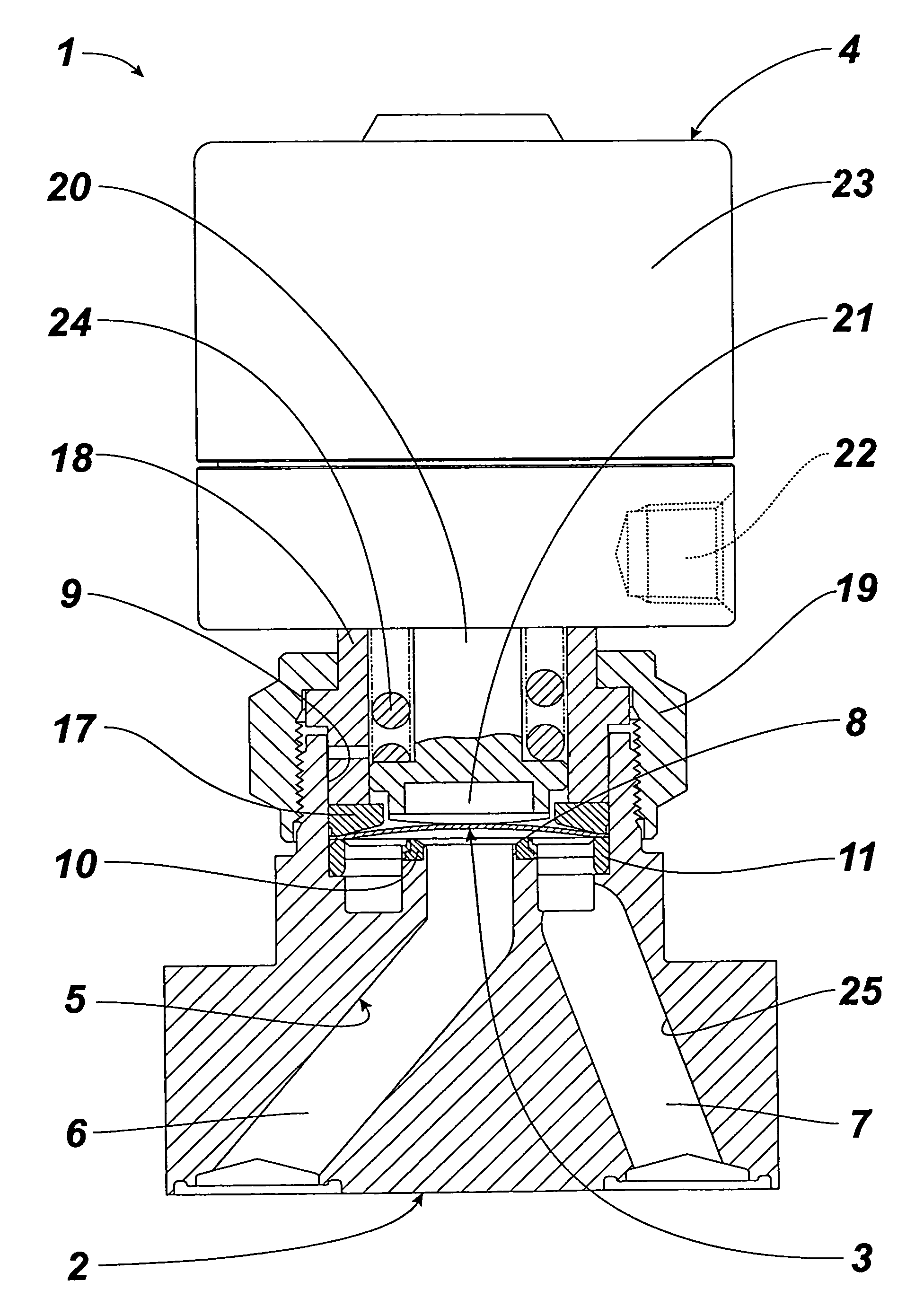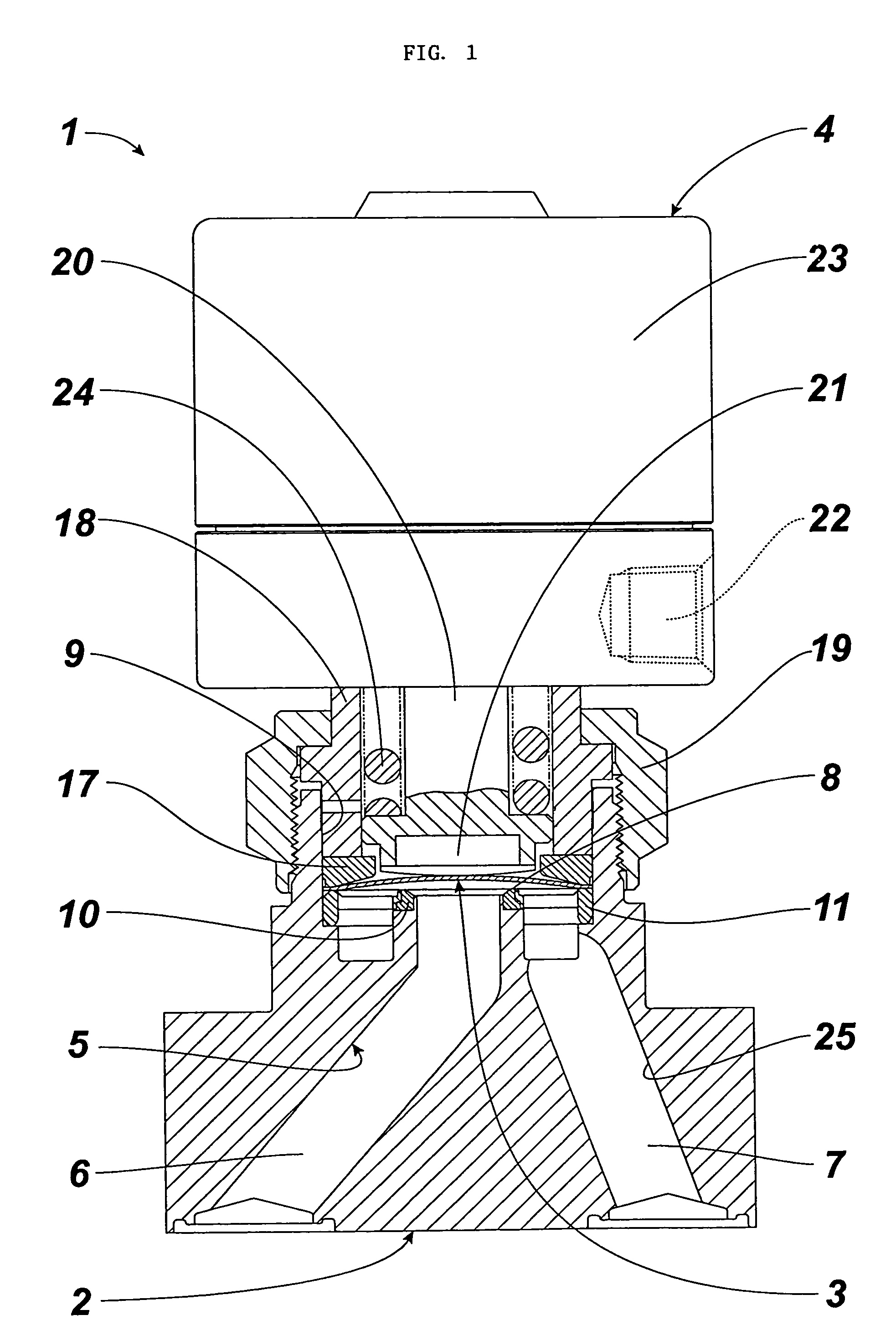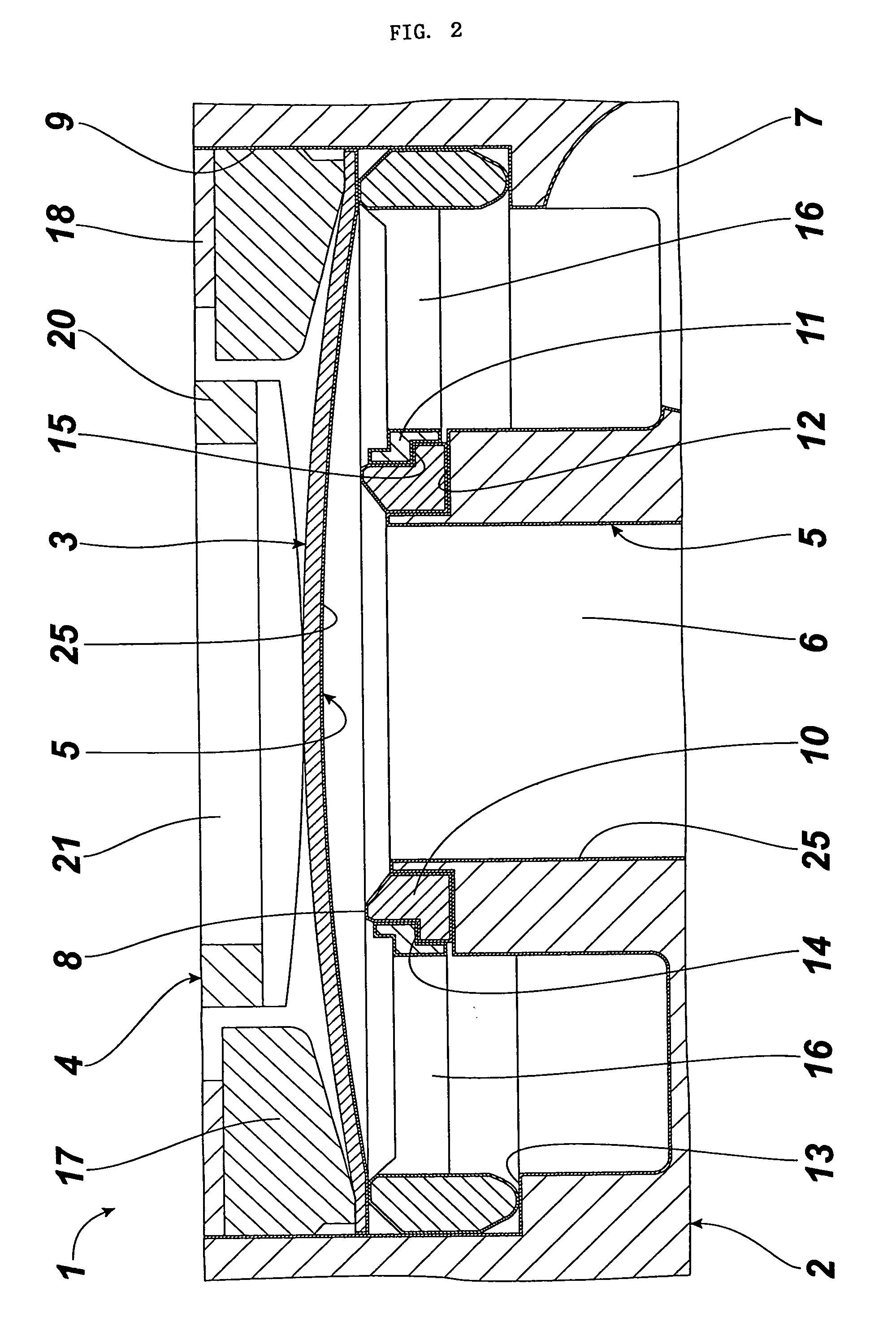Diaphragm valve for the vacuum exhaustion system
a vacuum exhaustion system and diaphragm valve technology, which is applied in the direction of diaphragm valves, positive displacement liquid engines, engine diaphragms, etc., can solve the problems of large facilities, inability to raise the pressure on the discharge outlet side, and inability to manufacture. easy, the effect of preventing damage and abrasion of the valve seat and the diaphragm
- Summary
- Abstract
- Description
- Claims
- Application Information
AI Technical Summary
Benefits of technology
Problems solved by technology
Method used
Image
Examples
Embodiment Construction
[0031]The embodiment in accordance with the present invention is described hereunder with reference to the drawings.
[0032]FIG. 1 is a longitudinal sectional view of a diaphragm valve according to the present invention. FIG. 2 is a longitudinal sectional view of an enlarged essential part of FIG. 1. FIG. 3 is a graph to show the relationship between the decomposition and temperatures of various gases where Spron is coated with Teflon.
[0033]A major part of the diaphragm valve 1 comprises a body 2, a diaphragm 3, a driving means 4 and a synthetic resin film 5. The diaphragm valve 1 is a normally open, direct touch type valve which is employed between a process chamber and a primary pump, or between the primary pump and a secondary pump in the vacuum exhaustion system.
[0034]The body 2 includes a flow-in passage 6, a flow-out passage 7 and a valve seat 8 formed between the two passages and made of stainless steel (i.e., SUS316L and the like) in this case. That is, the body 2 comprises th...
PUM
 Login to View More
Login to View More Abstract
Description
Claims
Application Information
 Login to View More
Login to View More - R&D
- Intellectual Property
- Life Sciences
- Materials
- Tech Scout
- Unparalleled Data Quality
- Higher Quality Content
- 60% Fewer Hallucinations
Browse by: Latest US Patents, China's latest patents, Technical Efficacy Thesaurus, Application Domain, Technology Topic, Popular Technical Reports.
© 2025 PatSnap. All rights reserved.Legal|Privacy policy|Modern Slavery Act Transparency Statement|Sitemap|About US| Contact US: help@patsnap.com



